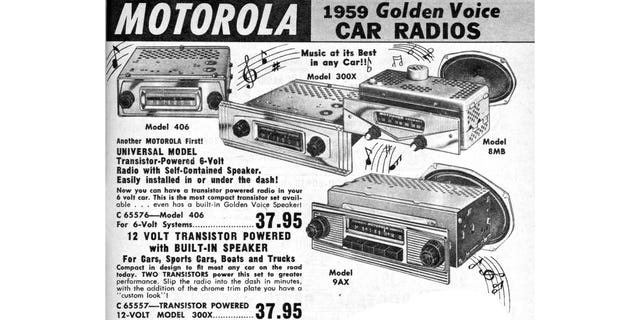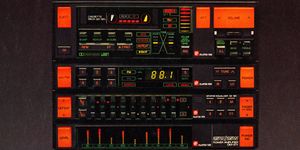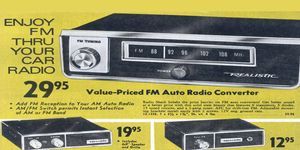To a lot of Americans today, 1959 seems like it was a pretty good year. Oh, sure, the country was just pulling out of a nasty recession that killed Edsel and DeSoto, but the cars looked outrageously great and we were between quagmire wars in the Far East (though another was just starting to heat up).
If you're on the right end of the political spectrum now, 1959 was a time before the Civil Rights Act of 1964, Griswold v. Connecticut, the Immigration and Nationality Act of 1965 and Miranda v. Arizona changed the country in ways not to your liking. And if you're on Team Left today, 1959 is close to the peak of union membership in America and a year when the very richest Americans had a 91% bite taken by the federal government.
Something for everyone, right? Unfortunately, 1959 was an absolutely horrible year if you didn't have a ton of money yet liked to hear music in your car, as this page from the 1959 Pep Boys catalog makes clear.
Long before Manny, Moe and Jack became the official warranty-service providers for fleeing Daewoo, the company put out mail-order catalogs that competed with the likes of Chicago's legendary J.C. Whitney.
The prices in the 1959 Pep Boys catalog look quite competitive, with rebuilt carburetors for under five bucks (about $49 in 2022 dollars), which just makes the big prices for aftermarket AM radios look scarier. The very cheapest one here went for $37.95 (about $371 now), with a bolt-in '59 Chevy pushbutton radio selling for $79.95 (about $782 today).
Granted, these radios were made by Motorola, a reputable big-name electronics manufacturer. They came with speakers (one apiece, because stereophonic sound was just beginning to reach consumers at the time), and they used futuristic transistors.
The descriptions of these radios use the term "transistor-powered," however, which implies that—like the Delco-made factory radios in 1959 Chevrolets—they may have used "hybrid" tube/transistor circuitry and thus still required the annoying warm-up period of tube radios. Still, if you wanted to groove on proper 1959 driving music, what choice did you have?




















